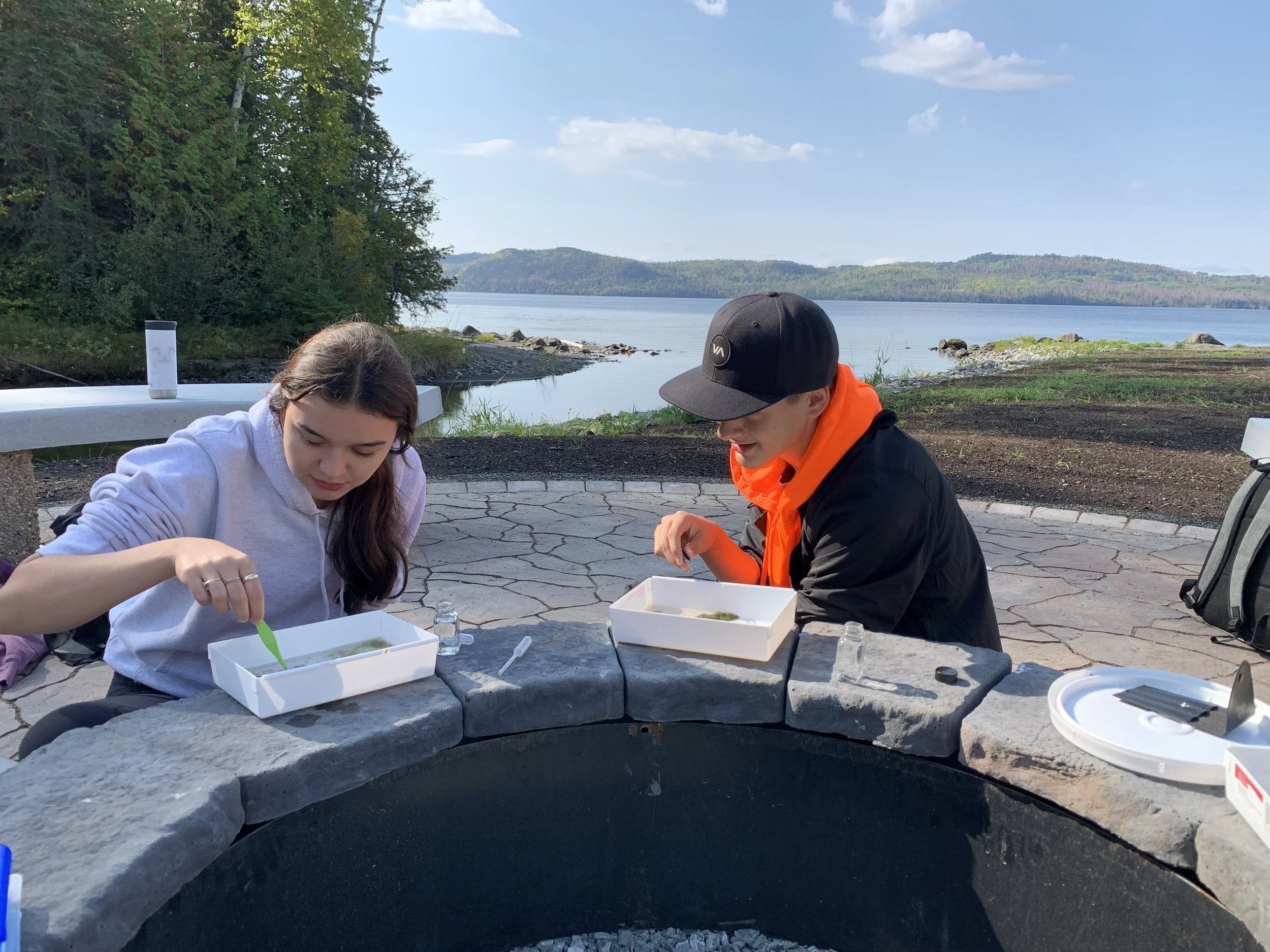Up North on Climate Outreach Youth Activities - Benthic Invertebrates
Up North on Climate Outreach supports teachers in encouraging interest in the environment and natural sciences among youth in Sudbury-area schools and in northern Ontario First Nation communities. Learn about activities involving benthic invertebrates offered by Up North on Climate Outreach and explore or download our activity resources.
Exploring Benthic Invertebrate Communities
Benthic invertebrates are small animals that live on the bottom of waterbodies, like lakes and streams. Many familiar insects, like dragonflies, blackflies and mayflies, exist as benthic invertebrates in their larval (immature) form. They are an important part of the aquatic food chain and are eaten by many species of fish.
Benthic invertebrates have different sensitivities to environmental degradation. Some types, like mayflies, stoneflies, and caddisflies, need very healthy environments to survive. Other types, like midge flies and aquatic worms, can live anywhere, including in areas that have environmental damage. By exploring which benthic invertebrates are found in an area, we can learn about the environmental conditions that exist there.
The Exploring Benthic Invertebrate Communities activity allows youth to participate in the collection and identification of benthic invertebrates from a local stream or lake location. Youth will also learn about benthic invertebrates as indicators of environmental health and take part in a rudimentary site assessment.
Exploring Benthic Invertebrate Communities activity resources
Benthic invertebrates identification chart (English, French, Ojibwe)
The front side of this illustrated handout describes what benthic invertebrates are and the role they can play in environmental assessments. The reverse side provides a step-by-step guide for participating in the activity.
Site assessment - Junior grades
This postcard-size handout features information about benthic invertebrates on the front side, and an illustrated guide to some benthic invertebrates and environmental sensitivity on the reverse side. The goal is to illustrate for younger age groups what benthic invertebrates can tell us about the health of a stream or lake. Students can put checkmarks on the back as they find invertebrates.
Site assessment - Senior grades
Lesson plan
A complete outline of the Exploring Benthic Invertebrate Communities activity including required materials, lesson considerations, activity breakdown, background information on benthic invertebrates and their role in environmental assessments, and elements relevant to the Ontario school curriculum (grades 1 through 12).













